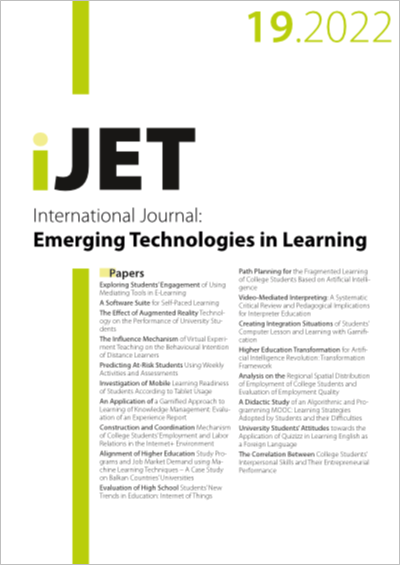Exploring Students’ Engagement of Using Mediating Tools in E-Learning
DOI:
https://doi.org/10.3991/ijet.v17i19.31655Keywords:
mediating tool, online learning, engagement, activity theoryAbstract
People are looking for flexible learning ways to meet educational needs in today's world context. There is an increasing need and expectation for universities to incorporate technologies into the design and delivery. It is of significant interest whether the increased use of electronic tools and the provision of online teaching resources positively impact students. The function and influence that a mediation tool can have should be evaluated more closely, rather than viewing them as just assistance. Student involvement is generally regarded as an important benchmark and indication of the quality of the student experience in higher education. Still, the idea is challenging to define and is interpreted in various ways throughout the literature. Hence, this study explores how students experience online learning using the mediating tool. Semi-structured interviews were applied to determine the types of student engagement. The interviews were recorded and transcribed by thematic analysis (Braun and Clarke, 2006). The results showed that the mediating tool positively supports social engagement, behavioral engagement, collaborative engagement, emotional engagement, and cognitive engagement. Implications shed light on teachers, designers, and students when using the mediating tool in online learning.
Downloads
Published
How to Cite
Issue
Section
License
Copyright (c) 2022 Pham Kim Chi, Ho Thi Ngoc Tram, Nguyen Thi Thu Huong, Bui Thi Diem Kieu, Nguyen Hoang Thai Anh, Nguyen Thi Thuy Linh

This work is licensed under a Creative Commons Attribution 4.0 International License.


